broncosaurs
Well-Known Member
Let the beat down begin. But I do think I have one of the easiest to use systems to brew beer at home and thought I would let others in on the information. Let me explain. Years ago I started with a small pot over the stove using extracts. Went to a grain/extracts. Then upped the system to a full three kegel system HLT, mash tun w/false bottom, RIMs, and boil. Started as a gas system then later I went to an all electric. Been on this system for years. I wanted to shrink the size of the system (space in garage not volume), speed up brew time and reduce the lifting and all the cleaning. The idea, I want a one pot system. I looked into the complete automatic one pot electric brew systems and nothing tickled my fancy. Too complicated, to small, very limited to try different methods. I love to build so I “dry hopped” on the DIY train. With the system I have now I can brew a 5.5 gal batch in 3 hours without taking any shortcuts in the boil or mash time. Typical brew day: 5 min mash in, 60 min mash, 15 min to boil, 60 min boil, 30 min cooling, 5 min transfer. The system is real easy to use. I can do 10 gal batches and also very high gravity beers. With a few add ons I can whirlpool and am working on doing stepped mashes. Clean up is a breeze and so is grain disposal. This is how it all worked out.
POT:
First I needed a pot small enough for a 5 gal batch but big enough for a 10 gal batch. I brew some very high avb beers which take a lot of grain. I settled on a 20 gal. kettle size The size has worked out quite well for what I brew. Maybe a little big for 5 gal light avb and a little small for 10 gal high avb but both work. Because I wanted to mash in the same pot as the boil the pot would either need to have a RIMs system, (HERMs was out because no HLT) or the pot needed to be insulated to hold the temperature. KISS, keep it simple stupid, no RIMs (yet). I found a few pots that had insulation and lids to hold mash temp like a cooler does. I looked into the insulation of the pots and all seem to have a spray in polyurethane. Being that I wanted to boil in the same pot I mash in, I had to make sure the insulation would hold up to the 212* of the boiling mash. None of the pot manufacturers would give me the OK to boil in their pot. In fact most said don’t. With some internet research most spray in polyurethanes are OK up to 260*. He 2xL , I’m willing to give it a $700 try. I ended up buying a 20 gal SS Brewtech Infussion mash tun. (Jump forward, after 30, one hour boils I see no degradation of the insulation.) This pot is beautiful and is holding up very well. The pot mash temperature loss for 9 gal is about 2*, 17 gal about 1*. I don’t use the manometer nor the false bottom because I use a BIAB bag. After the boil I will drain the trub cone out thru the bottom drain before transferring to the fermentation vessel. I do have trouble with the drain clogging up after a boil with a lot of hops. When this happens I have to use the handy dandy auto siphon. If SS brewtech would make a pot without the false bottom, without the manometer and holes, a larger hole in bottom to stop clogged drain, a slot in the lid (more on this later), maybe a guarantee on the insulation, and for less cost because of less features this pot would be the bomb. Just a note in case it is not obvious, DO NOT boil or heat using gas or anytype of heat under the pot. I built a cart with some 80/20 found on ebay. Added a top of some Corian countertop to add some class. Wheels so the full pot can be moved quite easily to and from under the bag lift.
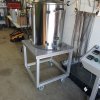
Last edited by a moderator:


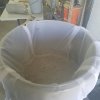
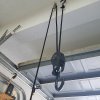
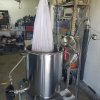
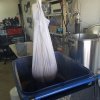
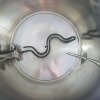
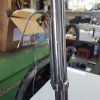






 Why a beat down? Many of us BIAB. Less to clean up too. Carry on.
Why a beat down? Many of us BIAB. Less to clean up too. Carry on. 




















![Craft A Brew - Safale S-04 Dry Yeast - Fermentis - English Ale Dry Yeast - For English and American Ales and Hard Apple Ciders - Ingredients for Home Brewing - Beer Making Supplies - [1 Pack]](https://m.media-amazon.com/images/I/41fVGNh6JfL._SL500_.jpg)



































